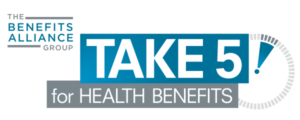.September 2021 – Canadian employees like the idea of group retirement plans, with 70% willing to trade a higher salary for a workplace pension plan according to a survey conducted in April 2021 by ABACUS DATA for the Healthcare of Ontario Pension Plan. But do they have the knowledge they need to get the most out of them?
According to a report by the Financial Consumer Agency of Canada, fewer than half (47%) of Canadians know how much they need to save to preserve their standard of living in retirement, which suggests there is plenty of room for improvement in plan members’ financial literacy.
“The vast majority of plan members have little to no idea if they’re on track for retirement,” agrees Amar Munjal, partner, pension & benefits, at CapriCMW in Burnaby, B.C., member firm of the Benefits Alliance Group. “Even though most of them have access to retirement calculators through the carriers’ websites, the majority of them—I would say 85%—don’t go through the planning process.”
Barriers include not knowing about the tools available, not understanding how to use those tools and a reluctance to face how far they are from their goals. The first step towards addressing these barriers, Munjal suggests, is effective communication that captures plan members’ interest and motivates them to attend education sessions. However, beware of preaching to the converted.
“A lot of our clients offer group education sessions or even one-on-one sessions on company time but it ends up being the same 30% of the staff who come on an ongoing basis. So 60 to 70% haven’t attended even one education session,” says Munjal.
To reach more people, he proposes alternatives to in-person workshops such as recorded webinars and quick-hit videos that convey one important message in two to three minutes. Invitations need to stand out; for example, by using humour. Campaigns can also be targeted to people investing in the default fund or to different demographic groups.
Employee education should be offered consistently at least once a year, and employers can consider making them mandatory—perhaps for a period of two years, during which virtually all employees can acquire a base level of knowledge about retirement planning. Some of Munjal’s clients have opened sessions to plan members’ partners, since the partner may be the one making financial decisions for the household.
For those who can’t be persuaded to engage, plan design is critical. The default fund should offer a reasonable long-term rate of return. A target-date fund or balanced fund is much more likely to help plan members achieve an acceptable level of income in retirement than a guaranteed investment certificate or money market fund.
Advisors have an important role to play by identifying financial literacy gaps within an organization and tailoring programs to close those gaps. Furthermore, to encourage commitment from plan sponsors, advisors can explain the benefits of more financially literate employees, such as reduced presenteeism because employees aren’t worrying about their finances and improved loyalty because plan members value their group retirement plan.
Personal finances is the number-one main source of stress, ahead of workload, according to the 2020 SANOFI CANADA HEALTHCARE SURVEY.
“If you can provide a retirement plan and get your staff engaged and looking at their retirement plan online, at their statement, asking questions, coming to education sessions … it reinforces the feeling that, ‘Wow, my employer is really helping me out here and contributing to my financial future’,” says Munjal.
 This article is part of The Benefits Alliance Take 5 for Health Benefits. Take 5 is a quarterly initiative that provides a deeper look a the employee benefits space by providing examples, research and case studies on what’s working for employers in Canada.
This article is part of The Benefits Alliance Take 5 for Health Benefits. Take 5 is a quarterly initiative that provides a deeper look a the employee benefits space by providing examples, research and case studies on what’s working for employers in Canada.
